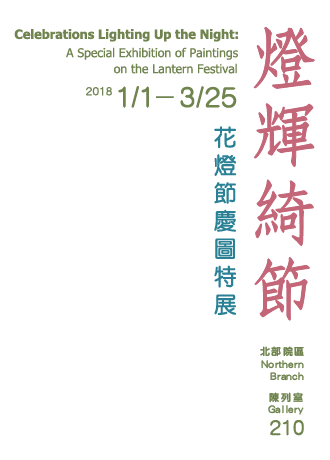Introduction
Many traditional festivals in Chinese society have their roots in agricultural life, in which people divided the seasons into plowing crops during springtime, tending to the fields in summer, reaping the harvest in autumn, and storing for the winter. To delineate this rhythm of life and reflect changes in the seasons, various festivals appeared over the course of time, gradually being filled with the popular customs we know and enjoy today. From celebrating the Chinese New Year all the way to the reunion dinner and staying up the following New Year's Eve, people across the land observed festivals to thank the gods and pay homage to their ancestors, express gratitude for everything in the world, show respect for their roots, and make wishes for the future. Not only do festivals harbor the ideals inherent in particular moral principles, they are also an important part of Chinese culture and the human experience.
Of the holidays celebrated throughout the year, the Lantern Festival on the fifteenth day of the first lunar month is traditionally one of the most joyful. Also known as the Minor New Year and the Yuan Xiao or Spring Lantern Festival, its origins go back to the Han dynasty, when Emperor Wudi worshipped the "God of Great Unity (Taiyi)," to whom he offered magnificent lanterns. By the Tang dynasty, lanterns as offerings to the gods had already become objects for appreciation, and evening dances with various entertainments created for a raucous celebration that reached unprecedented heights. Around the time of the Lantern Festival during the following Song and Yuan dynasties, "lantern markets" were set up to offer all kinds of colorful and unusual lanterns for sale, which then became a custom in the Ming dynasty. The grand event of the Lantern Festival as celebrated today not only continues such traditional activities as appreciating lanterns, solving riddles, lighting fireworks, and enjoying seasonal foods, it has also been integrated with other traditional elements as well as technology and modern life. The result is a beautiful and dazzling display that makes the atmosphere of this festival even more joyful and accessible to all.
The National Palace Museum has a fine collection of paintings and works related to the Lantern Festival, a selection of which is being presented in this special exhibition in three sections: "Customs and Celebrations of the New Year," "Beautiful Lanterns to Greet the Spring," and "Good Tidings for New Year's Day." The exhibit takes audiences back in time to see and appreciate the New Year customs and entertainments of old and the bustling market atmosphere of the Lantern Festival. The National Palace Museum Southern Branch in Chiayi is also simultaneously holding a special exhibition for the Year of the Dog, these marvelous displays south and north respectively celebrating in complementary fashion both the Chinese New Year and the Lantern Festival.

